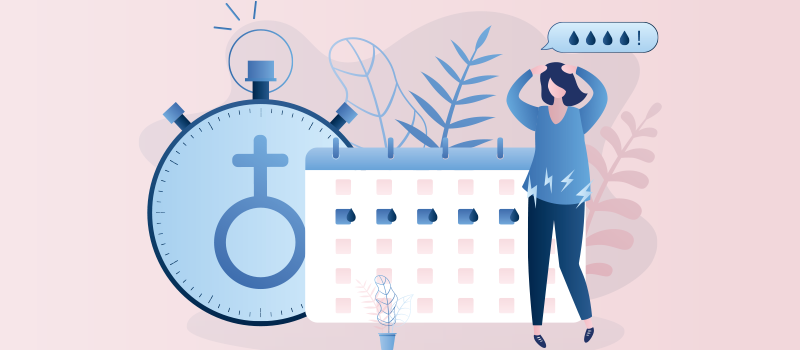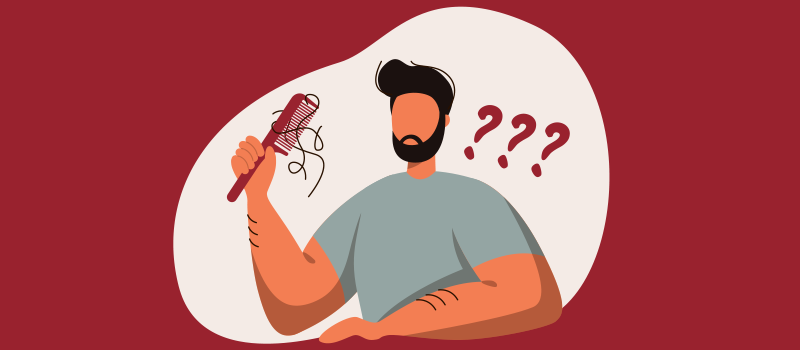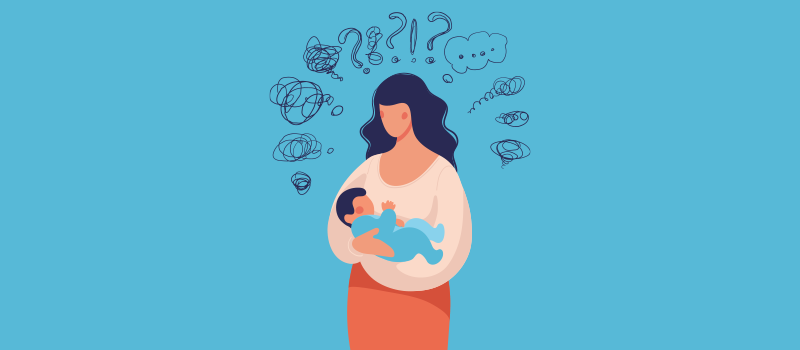What’s the Buzz
The Bee Healthy Blog
Can Women Take Hair Loss Medications? What Are the Side Effects?

Most people think only men experience hair loss. However, the truth is that more than half of all women are affected by noticeable hair loss. Female pattern hair loss (FPHL) or androgenetic alopecia is the most common type of hair loss in women. Approximately 30 million women suffer from this condition in the United States, which is roughly one-third of women nationwide.
Hair thinning and bald spots can have a more significant emotional impact on women than men due to differences in social acceptance. As a result, alopecia may potentially harm women’s emotional health and overall quality of life.
The good news is that hair loss in women is treatable. Continue reading to learn more about different options for hair loss treatment and their efficacy.
What is female pattern hair loss?
Female pattern hair loss is the equivalent of male pattern hair loss. The medical term for this condition is androgenetic alopecia. However, the pattern of hair loss in women is a little different from men. Men typically experience a gradual receding of the hairline at the temples. Women with female pattern hair loss tend to have a gradual thinning of hair at the part line. This is followed by increasing hair loss all over the scalp, typically radiating from the top of the head.
Why does androgenetic alopecia occur in women?
Potential causes of hair loss in women can be medical conditions, physical or emotional stress, or even medication side effects. Please talk to your doctor if you notice unusual hair loss as early treatment usually leads to a better outcome. A primary care provider or dermatologist can determine the root cause of the hair loss and provide the appropriate treatment approaches.
What is the best treatment for female hair loss?
There are several prescription and over-the-counter medications that are indicated for the treatment of female hair loss; they are thus far the most common treatment modalities for this condition. Some of the drugs are briefly described below:
Minoxidil (brand name Rogaine)
This is the only FDA-approved treatment for female pattern hair loss. The drug was originally developed as a treatment for high blood pressure but was accidentally found to encourage hair growth from hair follicles when applied to the scalp. Minoxidil works by shortening the telogen (resting phase) of the hair growth cycle. It is now the most common treatment for thinning hair in both men and women. A 2% strength topical minoxidil is available over-the-counter. The FDA has also approved a stronger topical solution (5% topical minoxidil) to treat hair loss in women.
Minoxidil results in women
Minoxidil is not a miracle solution for androgenetic alopecia. While it can encourage hair growth in some women, it does not restore the full density of hair on the scalp. It is important to note that minoxidil is not used as a quick solution. The medication takes at least two to three months to show effects. Most women need to continue using minoxidil (Rogaine) for 6-12 months to see if it can stimulate new hair growth. If it is effective, the indefinite continuation of therapy is imperative to maintain the results. Hair loss will resume once this medication is discontinued.
How to use minoxidil?
Minoxidil should be applied using a spray or dropper directly onto the dry scalp twice a day in areas with thinning hair. After gently massaging the medicine into the scalp, it should be left in place for at least 4 hours. It is important to wash your hands and wash off any residue of minoxidil solution on the forehead or the face to prevent unwanted hair growth
Anti-Androgens (Aldactone)
Androgens, such as testosterone, are male hormones that can accelerate hair loss in women. Anti-androgen drugs like spironolactone (Aldactone) can benefit women with androgenetic alopecia. These medications are especially useful in women with polycystic ovary syndrome (PCOS), a condition associated with excess androgens. Women of childbearing age or those who are planning to get pregnant should be aware of the fact that anti-androgen agents may cause abnormalities in the development of male fetuses' genitals Therefore, doctors usually prescribe anti-androgens along with oral contraceptives in women of childbearing age.
Iron Supplements
In some women, especially vegetarians or those with heavy menstrual bleeding, the cause of hair loss can be iron deficiency. If your blood iron level is low, your doctor may advise taking an iron supplement to alleviate the hair loss.
Hair Transplantation
If medication treatments to stimulate hair regrowth are ineffective, women can choose to undergo a hair transplant. This is a surgical procedure that involves taking hair from the back of the head and transplanting it to fill a balding area.
What happens if a woman takes finasteride?
Another FDA-approved hair loss treatment in men is finasteride, an oral medication, also known by the brand name Propecia. However, it is contraindicated in pregnant women and those who are planning to get pregnant due to the potential cause of congenital abnormalities of male fetuses’ genitals.
How does it work?
Finasteride works by inhibiting an enzyme that is needed for the production of dihydrotestosterone (DHT). DHT is a hormone that causes hair follicles to shrink, making it difficult for healthy hair to grow.
Can women use finasteride?
Finasteride can be used off-label in both premenopausal and postmenopausal women. Studies show that it is well-tolerated and results in significant hair regrowth. It is, therefore, an option for female pattern baldness in women who do not plan to get pregnant. This medication can be especially useful for women who have not responded to topical minoxidil (Rogaine).
Are hair growth pills safe?
Medications used to treat hair loss in women are well-studied, well-tolerated, and safe for most women. However, medications for hair loss can cause some side effects. You must use anti-hair loss drugs under the supervision of a healthcare provider and follow all label instructions carefully. You should stop taking the medication and talk to your doctor if side effects are severe or persist.
What are the side effects of hair growth pills?
Minoxidil topical solution is typically safe with scalp irritation from the alcohol being a common side effect. Other possible side effects include itching, flaking, burning, and dryness of the scalp. Sometimes, the new hair differs in texture or color from the surrounding existing hair. Also, if you are not careful, minoxidil can lead to excessive unwanted hair growth in the surrounding areas such as the forehead or other facial areas.
Potential side effects of finasteride include sexual issues such as reduced libido, breast tenderness, and effects on mood.
Anti-androgen drugs can cause side effects such as loss of libido, weight gain, fatigue, and depression.
Iron supplements can lead to stomach upset and constipation.
What medications cause hair loss in women?
Chemotherapy drugs are the best known for their hair loss side effects. However, a wide range of commonly prescribed medications, including antidepressants, cholesterol-lowering drugs, blood pressure medications, and antibiotics can also cause hair loss in both women and men.
Additionally, hormone treatments in women can trigger hormonal imbalances and lead to female pattern baldness. Birth control pills and hormone replacement therapy (HRT) in postmenopausal women, for example, contain female hormones like progesterone and estrogen, which can be the potential culprits that cause hair loss in women.
In conclusion, there are several treatments available for androgenetic alopecia in women. Minoxidil treatment is a good place to start for female pattern hair loss. This medication can help prevent further hair loss, stimulate the hair follicles, and encourage hair regrowth in many women. However, it is important to be examined by a doctor or other healthcare professional who can provide medical advice, diagnosis, or treatment.
References:
1. https://my.clevelandclinic.org/health/diseases/16921-hair-loss-in-women#
2. https://www.health.harvard.edu/staying-healthy/treating-female-pattern-hair-loss











SOCIAL